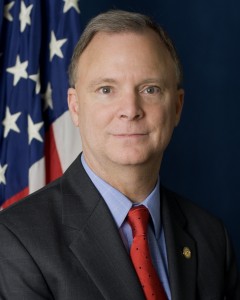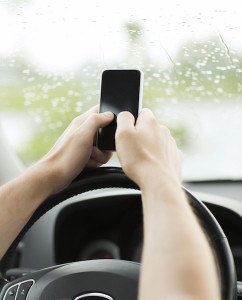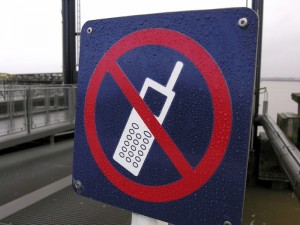17 – Your Cell Phone: It’s Not Worth the Risk

April 7, 2014 | Posted in Distracted Driving, Podcast Episodes | By Traffic Safety Guy
Comments Off on 17 – Your Cell Phone: It’s Not Worth the Risk
Podcast: Play in new window | Download
Subscribe: RSS
“When you decide not to wear your seat belt, you are pretty much endangering only your own life. But when you elect to talk on the cell phone or text, you are not only endangering your own life, you’re endangering the lives of pedestrians and others.” These words were said to National Transportation Safety Board (NTSB) Member Robert Sumwalt at an NTSB Distracted Driving Summit by family members of a loved one killed by a distracted driver.
April is Distracted Driving Awareness Month
April is Distracted Driving Awareness Month and the Traffic Safety Guy is hosting a four-part series on Distracted Driving: what it is and what we can do about it. The series kicks off with a discussion with NTSB Board Member Robert Sumwalt.
In 2012 distracted driving in the United States alone resulted in at least:
- 3,328 fatalities
- 410,000 injuries
The research reveals that someone who texts and drives is 23 times more likely to be in a crash and that 40% of American teens say that they have been in a car when the driver used a cell phone in a way that put people in danger. Expert after expert now declares distracted driving an epidemic.
Distraction a Top Priority at NTSB
The NTSB has taken a strong stand on distraction in general, and cell phones and other “portable electronic devices” (PEDs) specifically, recognizing that distraction in all modes of transportation is dangerous. In January 2014, the NTSB announced its “Most Wanted List” for the 2014 year. “Eliminating Distraction in Transportation” is on that list of 10 priorities.
In this episode Member Sumwalt candidly discusses what needs to be done about distracted driving, noting that cell phone use is one of the most pressing concerns. Almost all states have some form of a ban on texting, whether it is focused on teens or all drivers, because texting is recognized as a major contributor to distracted driving. However, only a handful of states have a ban on hand held cell phones and no state or locality has a complete ban on the use of drivers using a cell phone, hands free or not.
Time for a Complete Ban
Late in 2011, NTSB called for a nationwide ban on the use of portable electronic devices while driving. Hands free cell phone use is no safer than holding the phone in your hand; it is the mind that is distracted from the task for driving. Member Sumwalt continues this call for action, noting that to have an impact on distracted driving there must be good education, good laws, and strong enforcement of those laws.
It is time to have a social stigma attached to driving while using a cell phone, just as it now is socially unacceptable to drink too much and drive. Member Sumwalt pointed out that it took time for the attitude change in drinking and driving and it will probably take time to change the mindset regarding cell phones. One way to start that change is for parents to model for their children what it is to be a safe driver, which includes not using a cell phone while driving.
Businesses Are Taking Action
In 2009, NTSB instituted an agency policy that no employee of NTSB shall use a cell phone while driving. Member Sumwalt indicated that the policy worked to change behavior at the agency, and to lead by example.
But it is not only NTSB that has instituted this policy. A few years back, the National Safety Council did a survey of Fortune 500 companies about their cell phone policies. Looking at potential liability and employee safety, 18% of the companies that responded indicated they had instituted a complete ban on the use of cell phones while driving, including Shell Oil, DuPont, BP, Abbott, Cargill, and Time Warner Cable.
Notably, the vast majority of businesses indicated that there was no reduction in work production, and one-in-five indicated that they had seen a reduction in crashes and property damage.
Why Risk It?
Ultimately, as pointed out by Member Sumwalt, the NTSB recommendations are based on solid research into the underlying cause of crashes. As he asked during the discussion, the real question is: “What makes this phone call so important that I am going to risk my life and the lives of others?”
Related Links:
Websites:
Research:
- Distracted Driving Research
- NSC: Cognitive Distraction
- NSC: Employer Cell Phone Kit
- NSC: Fortune 500 Survey
- NTSB: Missouri Crash Investigation
- NTSB Most Wanted List: Distractions





